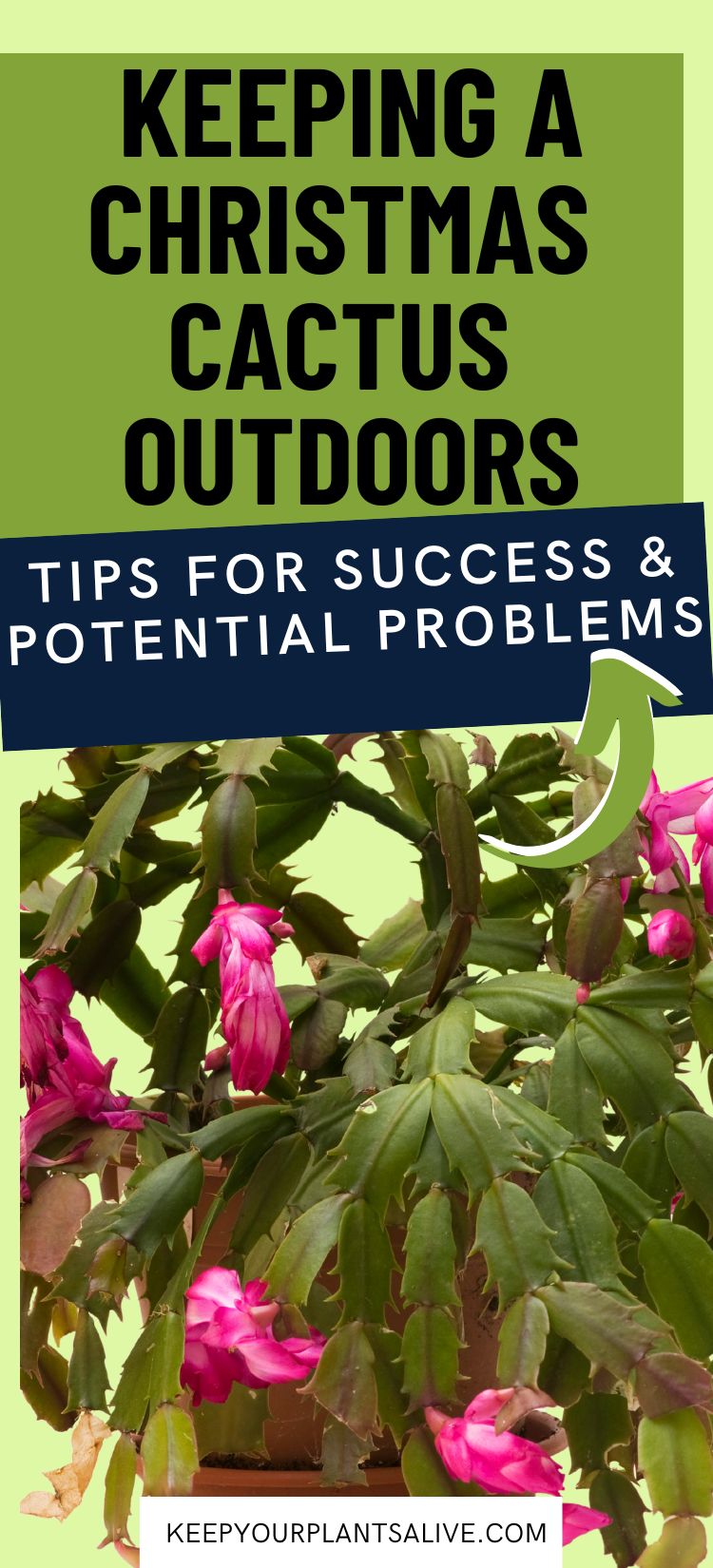As the holiday season draws near, many people ponder the extent to which they can embrace nature with their beloved holiday plants. Deciding whether a Christmas cactus can thrive outdoors poses an enticing conundrum for plant enthusiasts. But is it safe to place your Christmas cactus outdoors? Let’s delve into the intricacies of this vibrant succulent and explore the potential challenges of relocating it outside.
Often mistaken for a traditional cactus, the Christmas cactus (Schlumbergera) is notably different. With its lush green segments and delicate blooms that emerge at the end of the year, this plant exudes charm and warmth. However, if you are contemplating transitioning your Christmas cactus outdoors, several factors warrant examination to ensure its health and longevity.
First, let’s consider its origin and natural habitat.
Understanding the Christmas Cactus’ Natural Environment
The Christmas cactus hails from the tropical rainforests of Brazil, where it flourishes in a humid environment, nestled among trees and receiving filtered sunlight. It is not, as many presume, a desert-dwelling species. This unique background informs its needs regarding temperature, humidity, and light exposure. A crucial aspect of the Christmas cactus’s vitality lies in maintaining conditions reminiscent of its native environment. While the idea of letting this plant bask in the sun can be alluring, its natural habitat raises an essential question: Can it adapt to the extremes found outdoors?
Temperature Considerations: A Balancing Act
Temperature is perhaps the most crucial aspect to consider when discussing the outdoor life of a Christmas cactus. Generally, these plants thrive in temperatures between 60°F to 70°F (15°C to 21°C) during the day, preferring cooler temperatures at night. When faced with harsh winter winds or sweltering summer rays, the resilience of a Christmas cactus may be compromised.
Ideally, this succulent should not be exposed to freezing temperatures. Anything below 50°F (10°C) can be detrimental, as it may lead to stunted growth or severe damage. Conversely, high temperatures without adequate shade can cause dehydration and sunburn on the delicate segments. If you live in an area with temperate weather, the spring and fall months might provide an ideal window for allowing your Christmas cactus to enjoy the outdoors, albeit for limited periods and under vigilant observation.
Sunlight Exposure: The Golden Rule of Balance
Assuming you can sidestep temperature extremes, the next aspect to contemplate is sunlight exposure. Unlike traditional cacti that bask in direct sunlight, the Christmas cactus flourishes in dappled light. When considering placing it outdoors, it is imperative to replicate this environment. An unrelenting sun can scorch its tender leaves, leading to brown, shriveled segments.
Attempt to position your Christmas cactus in a shaded area, perhaps under a tree or alongside taller plants. Early morning sunlight or late afternoon rays can be beneficial, providing warmth without the harshness of midday sun. Additionally, consider employing garden fabric or mesh to create a protective barrier during peak sunlight. A little ingenuity can go a long way in crafting a suitable habitat for your Christmas cactus.
Humidity: The Underestimated Factor
Humidity is another critical consideration when contemplating life outdoors for the Christmas cactus. While it thrives in humid conditions, outdoor environments can often fluctuate dramatically. The hot summer sun can sap moisture from the soil and air, depriving the cactus of the moist atmosphere it craves. If you live in a particularly dry climate, consider utilizing a humidity tray or frequent misting to help maintain an appropriate level of moisture.
By combining adequate watering practices with these humidity-boosting strategies, you can greatly enhance the chances of your Christmas cactus thriving outdoors. Remember, these plants are accustomed to a certain degree of moisture, so straying too far from that can spell trouble.
Pest Awareness: A Hidden Threat
Unfortunately, the outdoor setting also presents the burgeoning threat of pests. Aphids, mealybugs, and scale insects are notorious for infiltrating garden plants, and your Christmas cactus is no exception. When allowed to roam outside, these pests can wreak havoc on the plant’s health and impede its growth trajectory.
Prior to moving your cactus outdoors, an inspection for any potential pests is essential. Regular monitoring is equally important, especially during the initial transition phase. If pests do invade, prompt action with appropriate insecticidal soaps or neem oil can protect your succulent from further damage.
Bringing It Back Inside: Timing Is Everything
After an invigorating stint outside, knowing when to return your Christmas cactus indoors requires astute observation. As temperatures begin to dip with the onset of autumn, the need to bring your cactus back inside grows paramount. Gradual acclimatization to indoor conditions—much like the initial outdoor transition—will assist in mitigating shock and stress. Additionally, giving the cactus a thorough inspection for pests before bringing it back inside is advisable.
In summary, while the prospect of successfully transitioning your Christmas cactus outdoors can be tantalizing, it comes with a myriad of challenges that necessitate careful consideration. Understanding its natural habitat, temperature requirements, sunlight preferences, humidity needs, and the risks posed by pests can profoundly influence its health and vigor. With thoughtful planning and diligent care, it is indeed possible to enjoy your Christmas cactus in both environments, allowing it to flourish and add its unique vibrancy to your living space, whether inside or out.





Leave a Comment